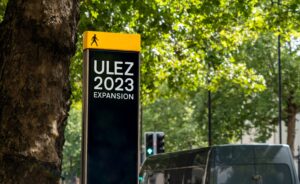Plants bedded around playgrounds can help to reduce toxins in the air, safeguarding the lungs of young people.
Roads outside schools have long-been a cause for concern when it comes to air pollution, with heavy morning and afternoon traffic flow, and the prevalence of idling vehicles, being two key reasons behind projects like School Streets, which look to limit the number of cars entering certain streets at particular times, or banning most vehicles completely. Nevertheless, many schools sit in pollution hotspots, and now a team of scientists believe introducing more plants to the location may be the answer.
Led by Lancaster University’s Professor Barbara Maher, a team installed so-called tredges – trees serving as hedges at head height – around three Manchester schoolyards during the 2019 summer holidays. Each schoolyard was situated next to at least one busy main road. Respectively, the schools received tredging made from western cedar, ivy, and a mix of western cedar, Swedish birch, and inner juniper hedge. Meanwhile, a fourth school received no hedging at all.
Air quality readings showed positive results, with the red cedar tredges performing best. In this instance, 49% of black carbon particles, and 26% of PM2.5 and PM1 microparticles from passing traffic were blocked, significantly reducing expose to air pollution. Cedar also lessened the severity of sudden acute spikes in air pollution occurring within the schoolyard.
It is believed this species performed so well because of tiny corrugated projections on its leaves, which help trap particles. These are then washed off by rain, winding up in soil or storm drains. In comparison the smooth, waxy leaves present in ivy are capable of physically blocking some particles, but do not trap and hold on to them effectively.
‘Our findings show we can protect school playgrounds with carefully chosen and managed tredges, which capture air pollution particulates on their leaves,’ said Maher. ‘This helps to prevent at least some of the health hazards imposed on young children at schools next to busy roads where the localised air quality is damagingly poor, and it can be done quickly and cost-effectively.’
Image credit: David Lindahl

















Leave a Reply